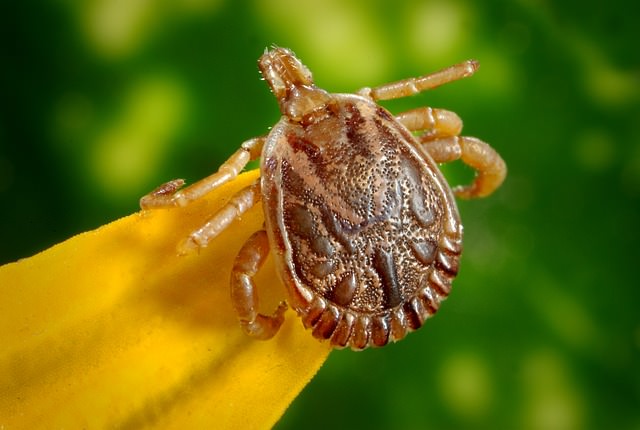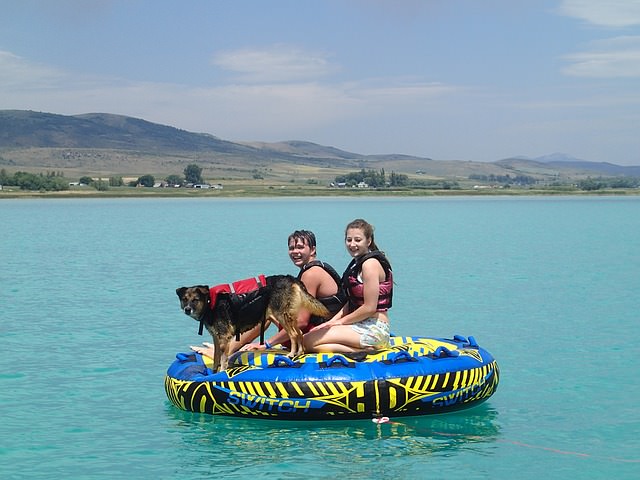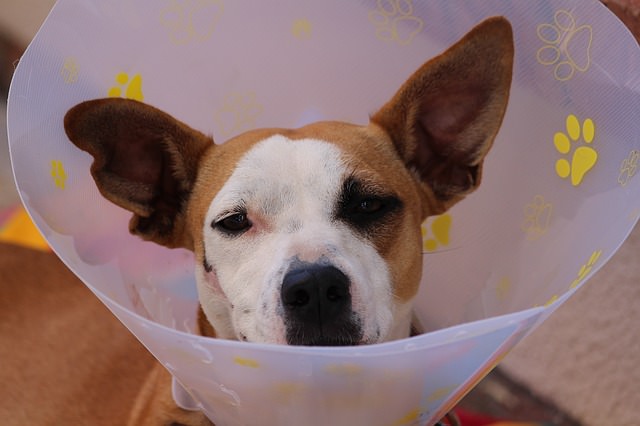With the increasing temperatures of summertime come increased risks for our four-legged friends. Luckily, there are things you can do to prevent emergencies from happening in the first place. If your dog does find himself in trouble, you’ll want to be prepared to help him and know what to do in case of emergency. With that in mind, here are 7 pet first aid tips for summer, with an emphasis on preventing trouble before it happens.
Be Prepared…
#1 – In general

There are many things you can do right now to help prevent problems before they become emergencies. You should know your vet’s summer hours and buy or assemble a pet first aid kit. Taking a pet first aid class or learning pet CPR can help you feel more prepared in case of an emergency. Supervising your dog every time he goes outside can help prevent everything from your dog escaping your yard and being hit by a car to eating something harmful in your yard such as fertilizer or mushrooms.
#2 – Prevent diseases and infections

Flea and tick prevention are crucial in the summer for maintaining your pet’s health. Fleas can carry tapeworms, and ticks can carry Lyme disease, Rocky Mountain Spotted Fever, and tick paralysis, among other things. Heartworm prevention is also critical during the summer months when mosquitoes are prevalent.
#3 – Prevent poisoning, choking, and bowel obstructions

There are more hazards than ever for your dog during summer. Many lawn treatments, pesticides, and fertilizers are toxic and can cause illness or even death if your dog ingests anything. Always wait at least an hour after your lawn has been sprayed to give the chemicals a chance to dry before letting your dog into the yard. Mouse and rat poison are equally problematic. Even mushrooms growing in your yard may be fatal to your dog.
Then there are the summer foods you might be tempted to share with your dog. You should always be aware of what foods are toxic for dogs. Corn cobs are frequently swallowed by dogs and become lodged in their intestinal tract, often requiring emergency surgery. You’ll also want to skip sharing your barbecue with your dog – many barbecue sauces contain onions or garlic, both of which are toxic for dogs.
#4 – Prevent accidental injury

Your dog should always be leashed outside unless he’s in a securely fenced area. Don’t leave windows open more than a crack, especially on higher floors. Don’t count on a screen keeping your dog inside if they see something exciting outside. If you spend much time in or near water, make sure your dog knows how to swim. Life vests are a great idea for dogs on docks and boats. Avoid walking your dog during the hottest part of the day to avoid heat stroke, sunburn, or burning the pads of their feet.
Treatment for…
#5 – Bites and stings

Avoid using topical products on bites and stings, as your dog could ingest them. Using an E-collar and covering the area with a bandage can help keep your dog from making things worse. A trip to the vet can help for any bites and stings, but it’s especially important in the case of a snake bite. Even bites that look minor can be causing a lot of problems under the surface of the skin.
#6 – Burns

Hot sand, concrete, and pavement can burn your dog’s sensitive paw pads. Soaking burns in cool water can bring your dog temporary relief, but most burns will need to be addressed by a vet for proper bandaging and possibly pain medication and antibiotics.
#7 – Injuries

Summer is the time of year when vets see the most sprains, strains, and fractures. Keep an eye on your dog at all times when playing outside and watch for signs of injury, such as swelling or limping. Don’t try to splint broken bones yourself – you’re likely to make them worse. Try to use a flat surface like a board to move your injured dog. A sheet, towel, or blanket may also be used. You want to try to keep them immobilized on the way to the vet so that injuries don’t get worse.
With a little bit of prevention and a little bit of knowledge and preparedness, you and your dog can have a happy, healthy, and safe summer together!

